What to consider when organizing lighting?
To increase the usable area and radically transform the space, many resort to combining the living room and kitchen. A similar design idea is used in small apartments, small private houses or summer cottages.
The issue of organizing light should be resolved before starting repairs. After the functional areas are planned in the combined room, it is necessary to determine the number and location of lighting devices.
When planning the kitchen-living room, they first decide in what style the interior will be made, in a single or different. In the first case, light sources similar to each other are selected for design, for example, spotlights located along the entire perimeter of the ceiling plane are suitable. In the second embodiment, individual lighting is set for each combined area.
To correctly organize the light in the room, they also take into account the color scheme of the interior, the number of furniture items, the presence of a working segment and a recreation area.
The photo shows the design of the kitchen-living room with a ceiling, decorated with lamps and black chandeliers on the suspension.
For a more functional design, you need to consider the installation of such details as switches, which contribute to the inclusion of light in certain areas of the kitchen-living room. The most comfortable environment can be achieved due to the effect of dim lighting, which is achieved thanks to the function of regulating the light flux. This solution is especially appropriate in the living room area, designed for relaxation. The adjusted soft and pleasant light will not strain and irritate the eyes.
There is a certain rule in the interior design of the kitchen-living room, a large and spacious room needs a higher level of lighting, and in a small room with a low ceiling, a minimum number of ceiling lighting fixtures should be installed.
The photo shows the lighting in the living room combined with the loft-style kitchen.
Light Source Options
To create a comfortable atmosphere in the design of the kitchen-living room allows different types of lamps.
Main lighting
As the basic or general lighting, homogeneous or different ceiling lamps, for example, a chandelier, act. For a small room, one central chandelier is suitable, and for a room having an asymmetric or elongated configuration, the installation of several lighting elements will be appropriate.
For the main light in the guest area, several options are used in the form of a chandelier, pendant lights, recessed spotlights, bus models or diode lights. You can give the room a relaxed atmosphere thanks to table lamps, sconces or floor lamps. In the interior of the kitchen, a ceiling chandelier located in the center is considered a traditional solution.
The upper light should be unobtrusive, uniform and soft, but at the same time sufficiently bright and high-quality. Modern interiors are often equipped with lamps on special roof rails, which can be rotated in any desired direction and illuminate a certain section of the kitchen-living room.
It is better to illuminate a room with a low ceiling by overhead or mortise models, and for a high kitchen-living room, you can choose lamps on suspensions.
In the photo, the main lighting is in the form of ceiling lights on hanging chains in the interior of the kitchen-living room.
Decorative lighting
The decoration function is performed by the backlight and LED strip in white or multi-colored design. Using these elements, you can highlight individual objects and accessories in the form of paintings, panels, vases, potted plants, elegant porcelain figurines, beautiful floor compositions, and more. LEDs also equip countertops, cabinets and other furniture to create an interesting soaring effect.
The most popular decorative solution for the kitchen-living room is the equipment of a multi-level suspended ceiling with perimeter lighting or the installation of a suspended structure with curly niches or individual elements decorated with LED strip and spotlights.
Lighting decor can also be built into the floor or be a frame on the podium.
An excellent option for additional light will be mobile bulbs on clothespins. They are easily fixed in any desired zone and, if necessary, are easily transferred to another place.
The photo shows the design of the kitchen-living room with a false ceiling and wall panels decorated with decorative lighting.
Functional
Light can be general and zonal. For the kitchen area, local lighting is less important than local. It depends on the purpose of the room. An ideal option is the use of several lighting fixtures that combine with each other in style. For example, the installation of pendant lamps, spotlights, moving lights or LED lights is suitable.
It is appropriate to supplement the dining area with hanging ceiling lamps, suitable for the kitchen interior. You can choose a crystal chandelier, a model with glass shades or a lamp with lampshades made of wood, fabric or other materials that are not afraid of dust, grease and other pollution. A single lamp or several devices are placed above the table in one line or in the form of a circle, square or any arbitrary figure.
The photo shows ceiling spotlights in the design of the combined kitchen-living room in a modern style.
Location of fixtures
The light in the interior of the kitchen-living room should be uniform and fill the entire area of the room, without leaving darkened corners. No shadow should be present in the work and dining areas. The lamps in the kitchen-living room are positioned so that the light does not create glare and does not irritate the eyes. To do this, you should correctly choose a lamp with a power that provides a moderate light output.
It should be borne in mind that if there are many light sources in the room, then they should have a small power, not to blind and at the same time not to be too dim.
The photo shows the design of the kitchen-living room, complemented by spotlights and decorative LED lighting.
A certain lighting solution can contribute to the visual correction of the shape and size of the room. For example, in order to lengthen the room, it is appropriate to arrange several lamps in the longitudinal direction. Due to the transverse placement of the fixtures, it will turn out to give the kitchen-living room a proportional square shape. In a narrow room due to the illumination of the far wall, the space will visually become much larger.
The photo shows an example of the placement of lamps in the interior of the kitchen-living room.
Luminaires built in a straight line raise the ceiling plane and give weightlessness to the kitchen-living room. In order to smooth the vertical and horizontal geometry of the room, install lamps with reflectors.
A completely different effect, hiding the height of the room, can be achieved by ceiling lamps with light beams incident on the walls.The organization of perimeter ceiling lamps will make room shape more expressive and visually expand the space.
The photo shows the light design of the combined kitchen-living room, made in the style of French Provence.
Zone Lighting
Thanks to the luminaires, the boundary between the two functional sections can be identified and convenient switching on and off of different segments can be achieved.
If the interior does not provide for the installation of elements in the form of partitions and other things, lighting will help to divide the kitchen-living room into zones.
In the living room you can install a central chandelier, and add a floor lamp with a directional light to the soft area with a sofa and armchairs.
For the kitchen, spotlights are suitable. The ceiling plane above the bar counter is perfectly decorated with pendant lights that will allow for delicate zoning of the space. Above the dining group, it is appropriate to place a single classic chandelier or several multiple lamps hanging from the ceiling. If the table occupies the intermediate area of the kitchen-living room, the chandelier is installed in the center of the room.
In the photo there is zonal lighting of the kitchen-living room with a beautiful black and golden chandelier mounted on the ceiling above the dining table.
For the working surface, local lamps are selected, characterized by daylight, which will not irritate the eyes during cooking. For maximum comfort, spot lights are integrated into the upper hanging cabinets of the headset.
In the photo, a multilevel suspended ceiling with spotlights and lamps zones the space of the combined kitchen-living room.
Due to the different brightness of the glow, it is also possible to zone the kitchen-living room. The kitchen segment should have more saturated and high-quality lighting, and the living room should have subdued and boudoir light.
For visual delimitation of space, the use of a thermal spectrum is appropriate. For example, the dining area is equipped with fluorescent lamps with a white glow, and the place to relax is complemented by lamps with a soft yellow light.
Photo gallery
Lighting in the kitchen-living room is the main aspect that allows you to create a harmonious design. Thanks to the variety of modern fixtures, it turns out to achieve a comfortable and convenient environment. Competent lighting highlights each logical area in the combined room, favorably emphasizes its features, style design and general interior concept.

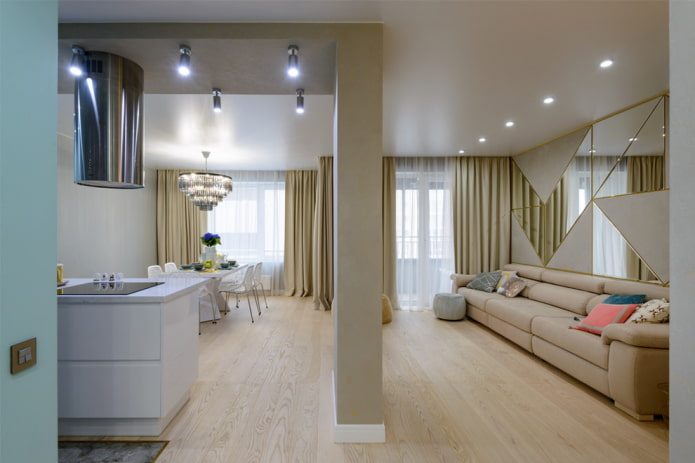
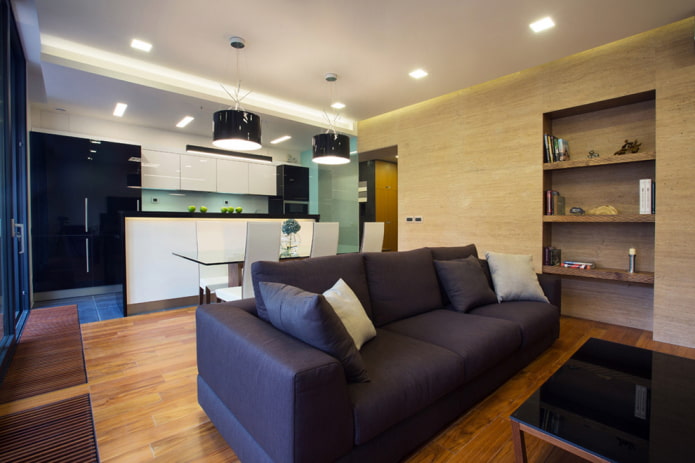
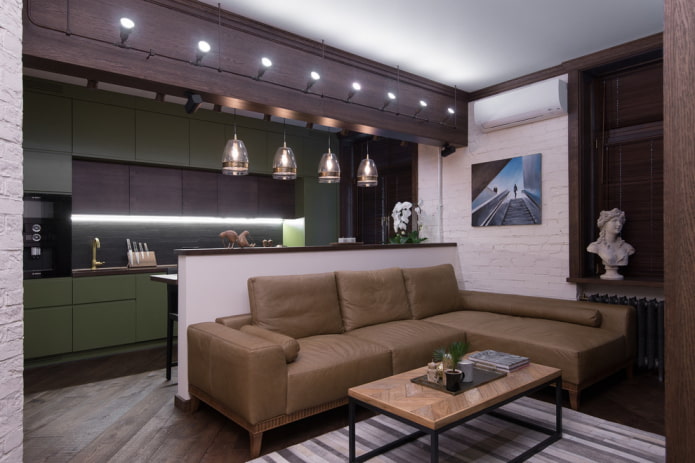
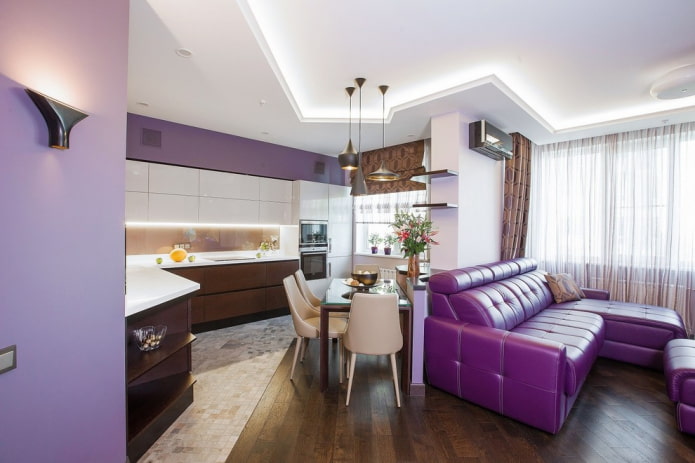

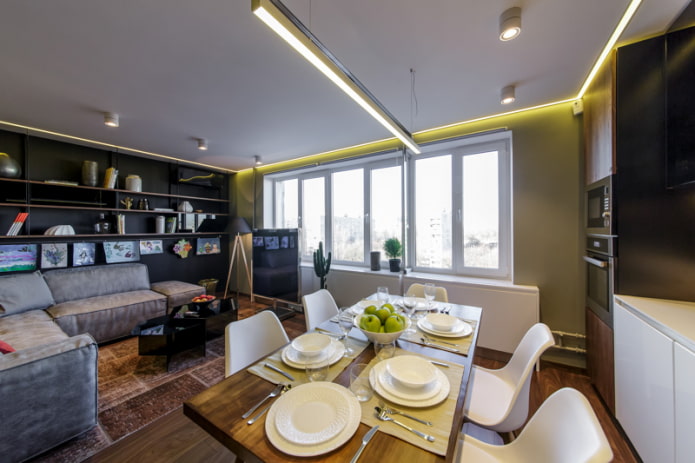

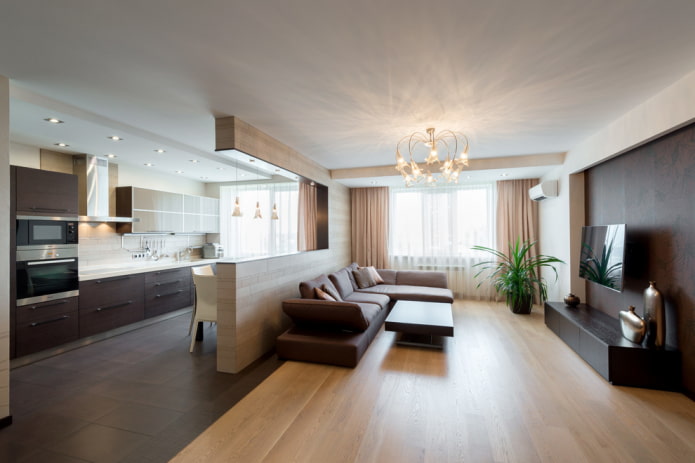
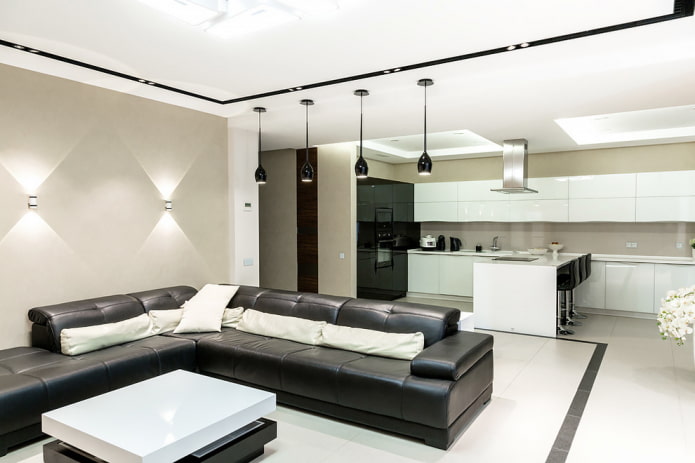

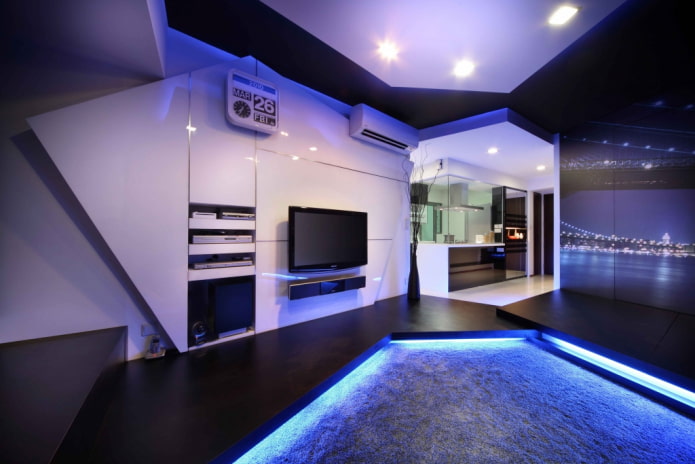
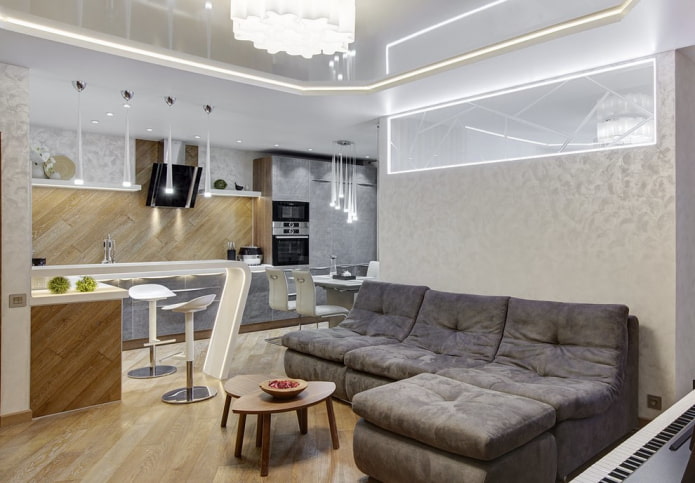

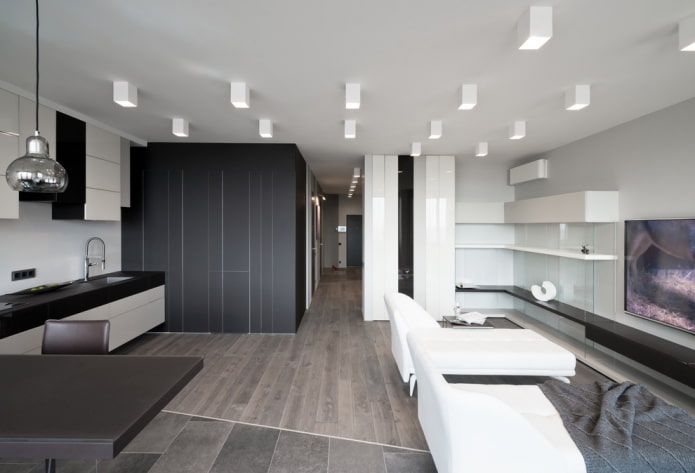

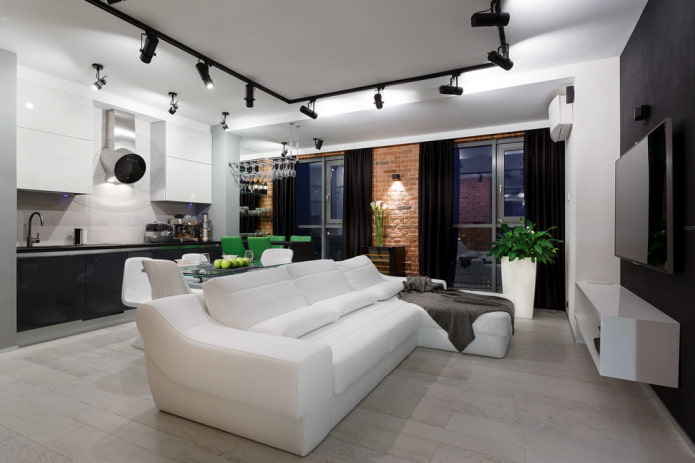
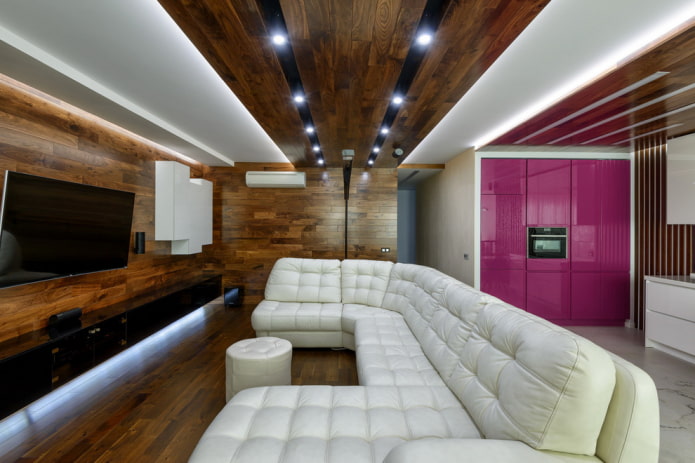
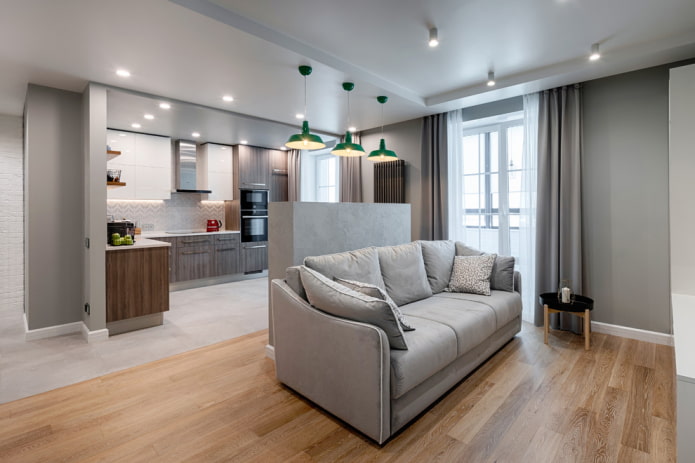
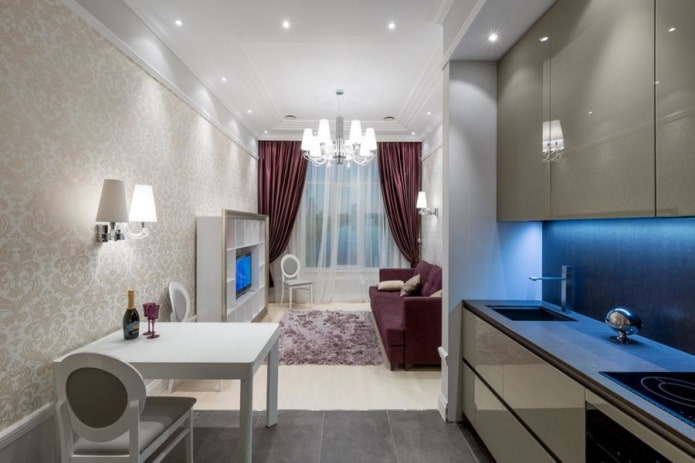
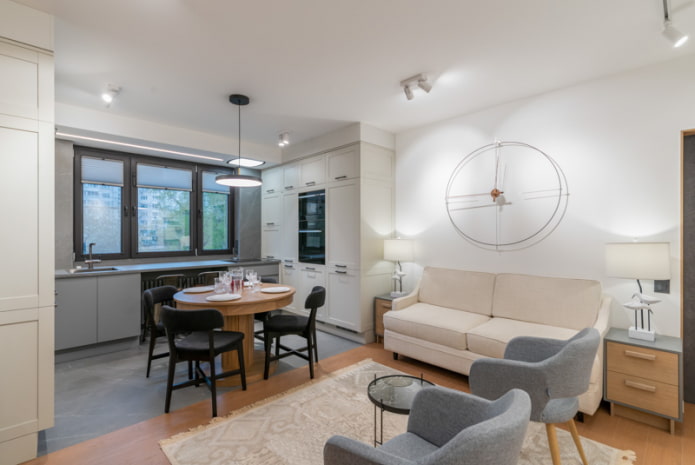
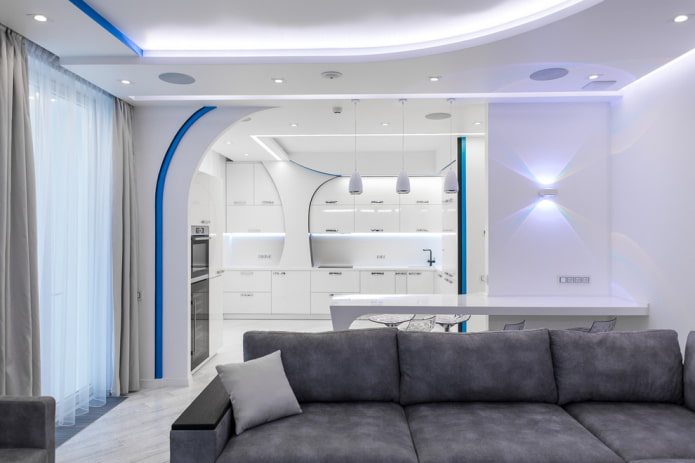
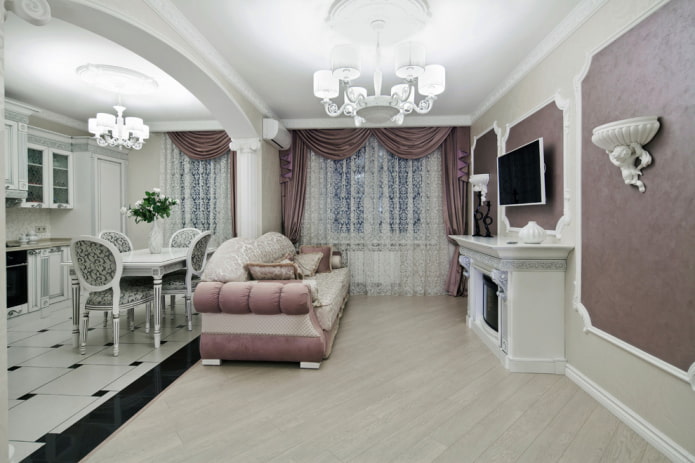
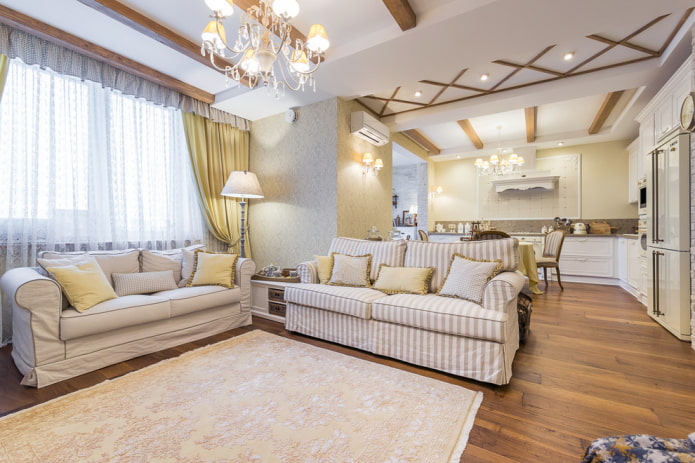


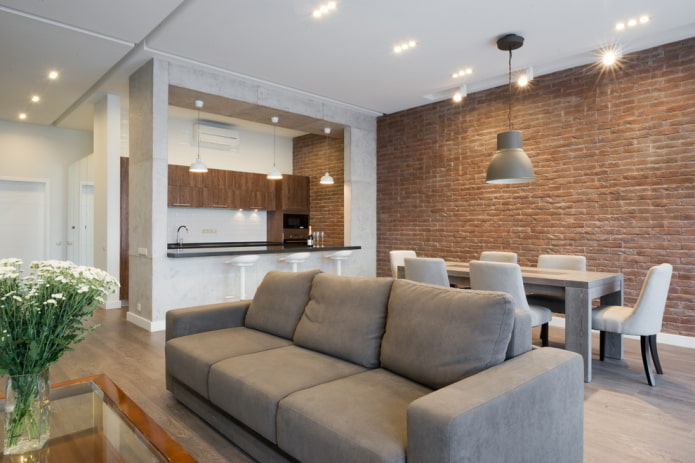
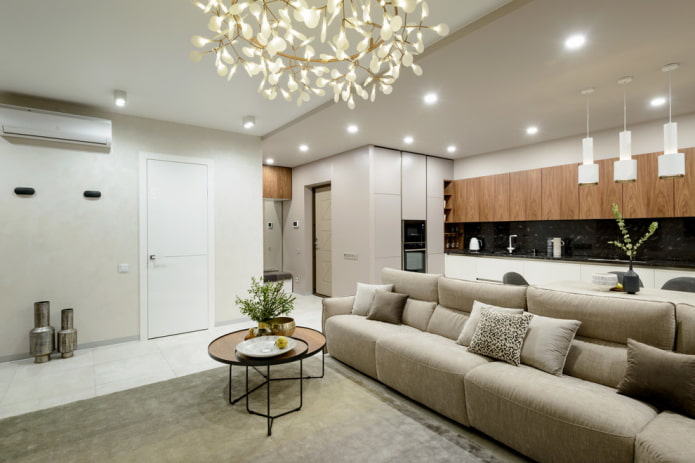
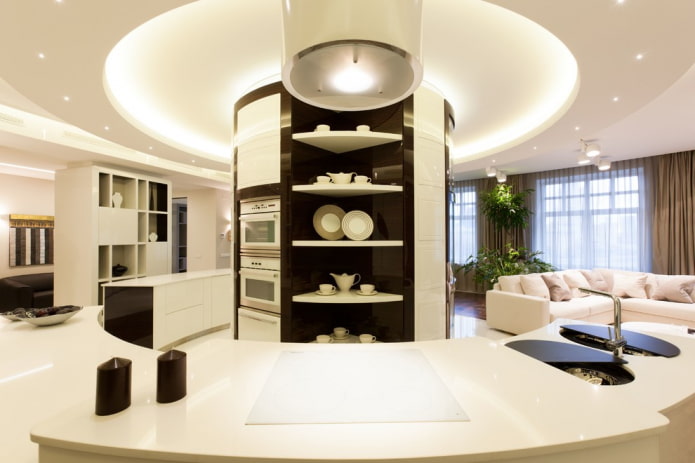
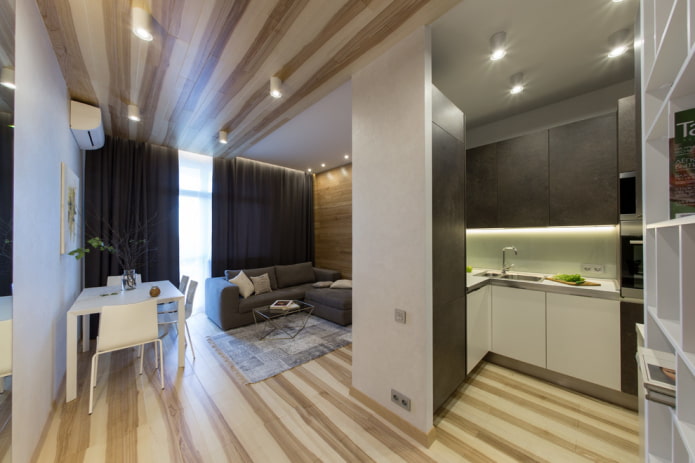
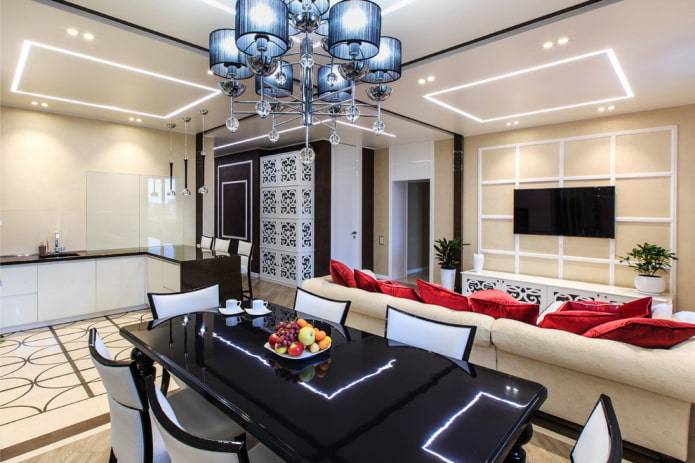
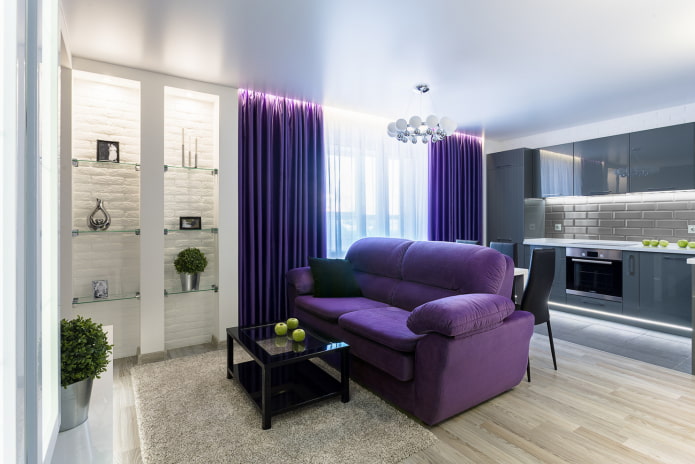
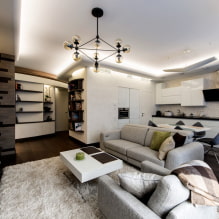
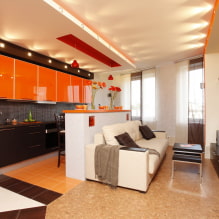


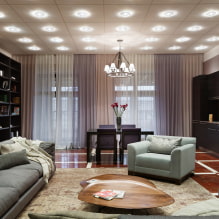

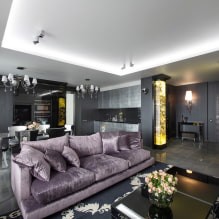
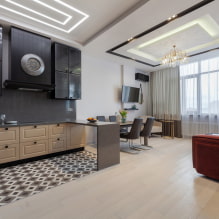
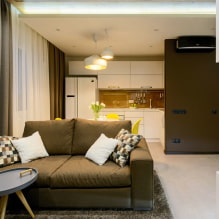

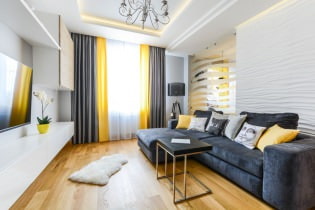 Choosing the best living room interior style: 88 photos and ideas
Choosing the best living room interior style: 88 photos and ideas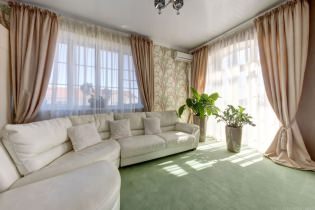 Curtains in the living room: 70 stylish photos of ideas in the interior
Curtains in the living room: 70 stylish photos of ideas in the interior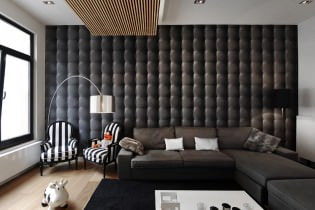 Wall decoration in the living room: choice of colors, finishes, accent wall in the interior
Wall decoration in the living room: choice of colors, finishes, accent wall in the interior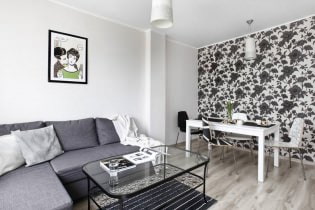 White and black and white wallpapers in the living room: 55 photos in the interior
White and black and white wallpapers in the living room: 55 photos in the interior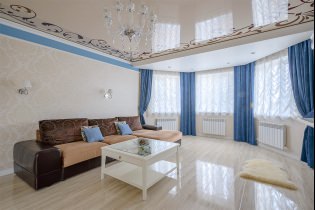 Stretch ceilings in the living room: views, design, lighting, 60 photos in the interior
Stretch ceilings in the living room: views, design, lighting, 60 photos in the interior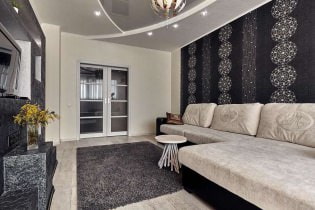 Wallpaper in the interior of the living room: 60 modern design options
Wallpaper in the interior of the living room: 60 modern design options